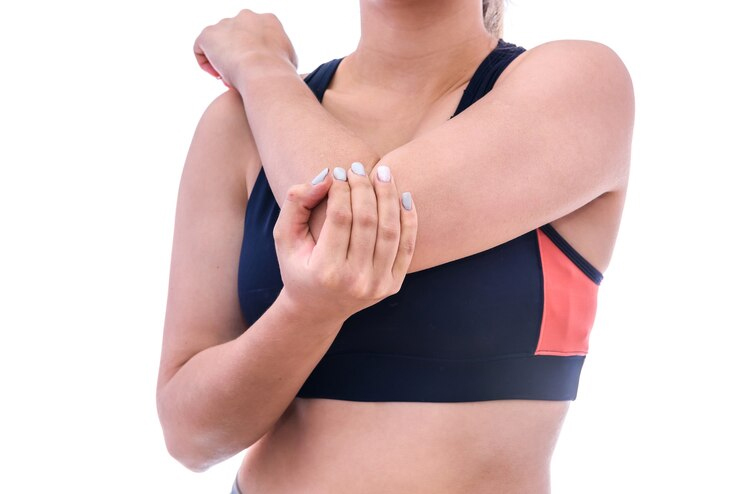
This article was published on: 11/14/22 8:07 AM
What is Rotator Cuff?
The shoulder is an essential component of the human body. Where that performs various functions or aids in many activities such as combing your hair or playing a game of badminton and you are unaware of it and take it for granted.
It appears simple, but your body’s process is complex. The rotator cuff is important because it converts motion smoothly, protects your shoulder joint, and allows you to move your arm over your head like swimming, baseball, tennis, and other sports.
A rotator cuff is a group of muscles and tendons that help you keep the ball of your upper arm bone, or the head of your upper arm bone, in your shoulder socket. The rotator cuff is helpful for movements such as raising and rotating your arm.
Some of the muscles involved in the rotator cuff include:
When you lift your arm at that time it helps your shoulder to hold your humerus in place and keeps your upper arm stable.
When you extend and rotate your shoulder that time this muscle plays a major role in your shoulder.
The smallest rotator cuff muscle in your shoulder where the main job of this muscle is to help to assist with the rotation of the arm away from the body.
When you rotate your arm, keep it straight out and lower it at the same time. This allows your shoulder to hold your upper arm bone to your shoulder blade while rotating your arm.
What are the Causes of Rotator Cuff?
Rotator cuff injuries are generally caused by progressive wear and tear of tendon tissue over time. The damaged tendon or irritation will be found due to repetitive overhead activity or prolonged bouts of heavy lifting. An incident like falls or accidents this type of incidents can affect your rotator cuff. Some factors that can increase the risk of having rotator cuff injury:
Usually, this injury increases the risk with your increasing age. Commonly rotator cuff injury in people who are 60+.
There is a high risk of damage to the rotator cuff over time for people who involve in an occupation like carpentry or house painting because these types of activities require repetitive overhead arm motions.
The risk of rotator cuff injuries increases for people who participate in sports such as baseball, and tennis and also for people who lift heavy weights in a gym.
Sometimes this injury also occurs when a person has some genetic intrinsic involved with the rotator cuff.
What are the Symptoms of Rotator Cuff Related to Shoulder Pain?
The most common symptoms of rotator cuff injury such as:
Sometimes doctors or you will find rotator cuff injuries don’t cause pain.
What are the Exercises for the Rotator Cuff Pain?
Generally, people who are in sports are well known for these injuries that are serious business. They can be extremely painful, limiting, and slow to heal.
After an injury, people can try a method called rest, ice, compression, and elevation, or ‘RICE,’ which works together to reduce pain and swelling. When you notice that the swelling is reducing and that moving your arm no longer causes pain. For those who experience issues such as a frozen shoulder or loss of range of motion. Among the exercises are:
What are the Treatments for Rotator cuff related to Shoulder Pain?
If your rotator cuff injury is severe surgeons recommend surgery for the rotator cuff might need surgery.
There are some special cases where a steroid injection into the shoulder joint might be helpful, especially if the pain is interfering with sleep. But this temporary relief, can affect your tendon and reduce the success of future shoulder surgery.
There various types of surgeries are available for rotator cuff injuries, including:
It is a procedure in, which surgeons insert an arthroscope in easy words a tiny camera and tools through small incisions to reattach the torn tendon to the bone.
In some cases, an open tendon repair may be a better option. In these surgeries, the surgeon works through a large incision to reattach the damaged tendon to the bone.
In such cases, some times tendon is too damaged to be reattached to the arm bone, and it is all upon the surgeons to decide to use a nearby tendon as a replacement.
Sometimes surgeons find massive rotator cuff injuries that may require shoulder replacement surgery. To improvise the artificial joint’s stability, an innovative procedure installs the ball part of the artificial joint onto the shoulder blade and the socket part onto the arm bone.